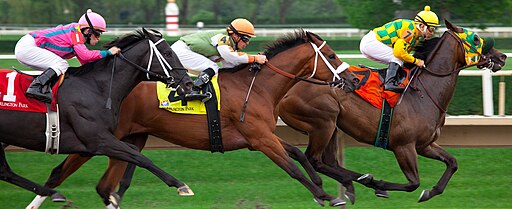One way to categorize investments would be dynamic assets like stocks and bonds and static assets like commodities and art.
Investment taxonomy is multidimensional. Along one dimension would be concentration/dispersion diversification. For example owning stock in one company alone as compared to several companies within the same industry as compared to several companies among different industries. Still a greater level of diversification can be achieved as an investment portfolio approaches a share in all companies (e.g., broad-market index funds).
Along another dimension would be type of return claim. A stock investor has a residual claim to the profits that remain after all other claims have been satisfied. That is after all creditors have been paid--all liabilities have been settled. A bond investor (lender/creditor) has a primary claim putting them somewhere higher up the priority list. Keep in mind there are various levels for various types of debt issued.
Along another dimension would be whether the investment generates cash flows or is dependent upon perpetual new buyers at higher prices for its rate of return. Consider my prior partial list and the explanation behind the distinction.
Still another dimension would be how dynamic are the assets one is investing in. Can the asset maintain or gain value in a changing world? This is where I would like to focus today.
In my thinking dynamic assets are essentially investments in ideas with potential cash flows. Static assets are essentially investments in inputs (costs) where the market is continually working against you and high-risk speculations on future tastes and technologies (future desirability & greater fool theory rolled into one speculative bet).
With static assets you can be right and still be wrong. The opposite is true of dynamic assets to some degree as businesses can change direction.
Since static assets have a locked-in nature, they should command a risk premium. Indeed they do but it isn't necessarily sufficient compensation for the added risk of loss they offer.
The general case is that the more dynamic an asset is the lower its experienced volatility and thus the lower its expected return. But there is more to this story. Volatility is a cruel mistress. It can rob an investor by impairing capital because of the pattern of returns--negative or even just low returns at the beginning of an investment horizon while cash is being pulled out can leave the principle so low that eventual recovery is not possible. Therefore, a static asset with high volatility and high expected return might experience high (negative) volatility, prices going down rapidly, at just the wrong time, early in the investment horizon. Dynamic assets can be the slow and steady that wins the race.
Volatility's cruelty doesn't end there. It can collapse and vanish as well, but this leaves investors with low expected returns. A static investor needs volatility to justify future returns.
One should not assume I am saying that one is preferred necessarily to the other. Rather this is one exploration into how assets can be categorized and how to think about investments. Assets along this spectrum fulfill differing objectives with differing opportunity/risk characters. Investing is about tradeoffs.
Consider this stylized linear example:
Forever people have been trying to eliminate oil: first they were doing so because it was nothing but a nuisance, next they we're doing so because it was getting more and more expensive as more and more of the world's machines ran on it where the solution was to find more and more of it and produce it cheaper and cheaper, and now substitutes are becoming a better and better option.
To bet on a technology one needs to be compensated for risk with commensurate returns, and because the chance of a given technology profitably working is incredibly small, those need to be exceptionally high potential returns. In that case don’t own oil; own mineral rights. Don’t own proven reserves; own unproven reserves. Don’t own production; own potential production.
Oil was to the 1920s what cryptocurrency assets might be to the 2020s. Bitcoin, Ethereum, and all other crypto assets are bets on a particular strategy within a particular technology. So invest with care. These are highly speculative and certainly very static within my classification. Do not mistake the dynamic ability of people and firms with ideas and fluidity to be attributes of the underlying crypto technologies these people and firms may be employing.
One last example: Diversified real estate is a dynamic asset while concentrated real estate is static. Similarly investment in the rights to a franchise within a geographical area is more dynamic than is the franchise location itself and even more so than the specific land the franchise sits upon. To this end see the picture below and keep looking until you see it:





